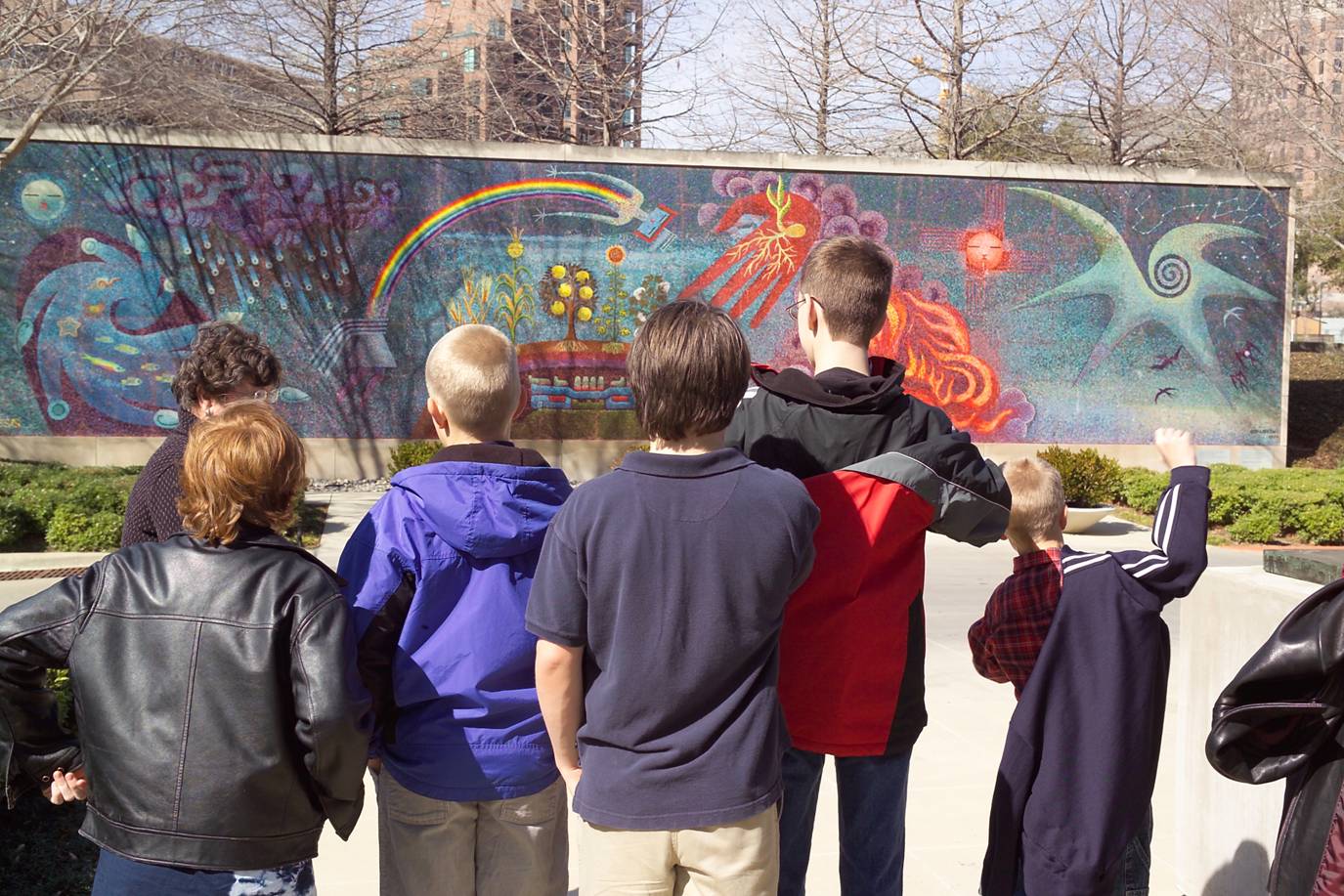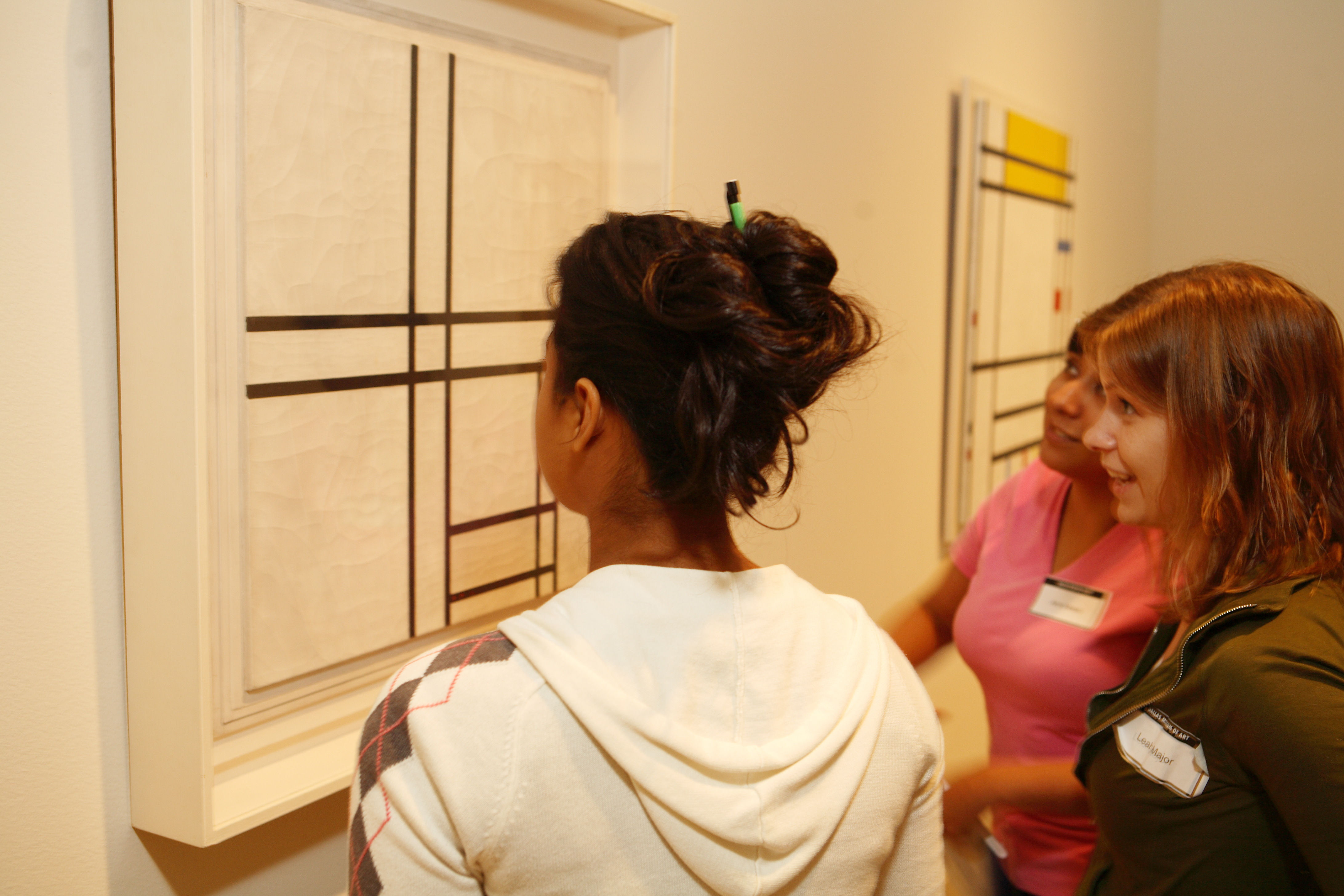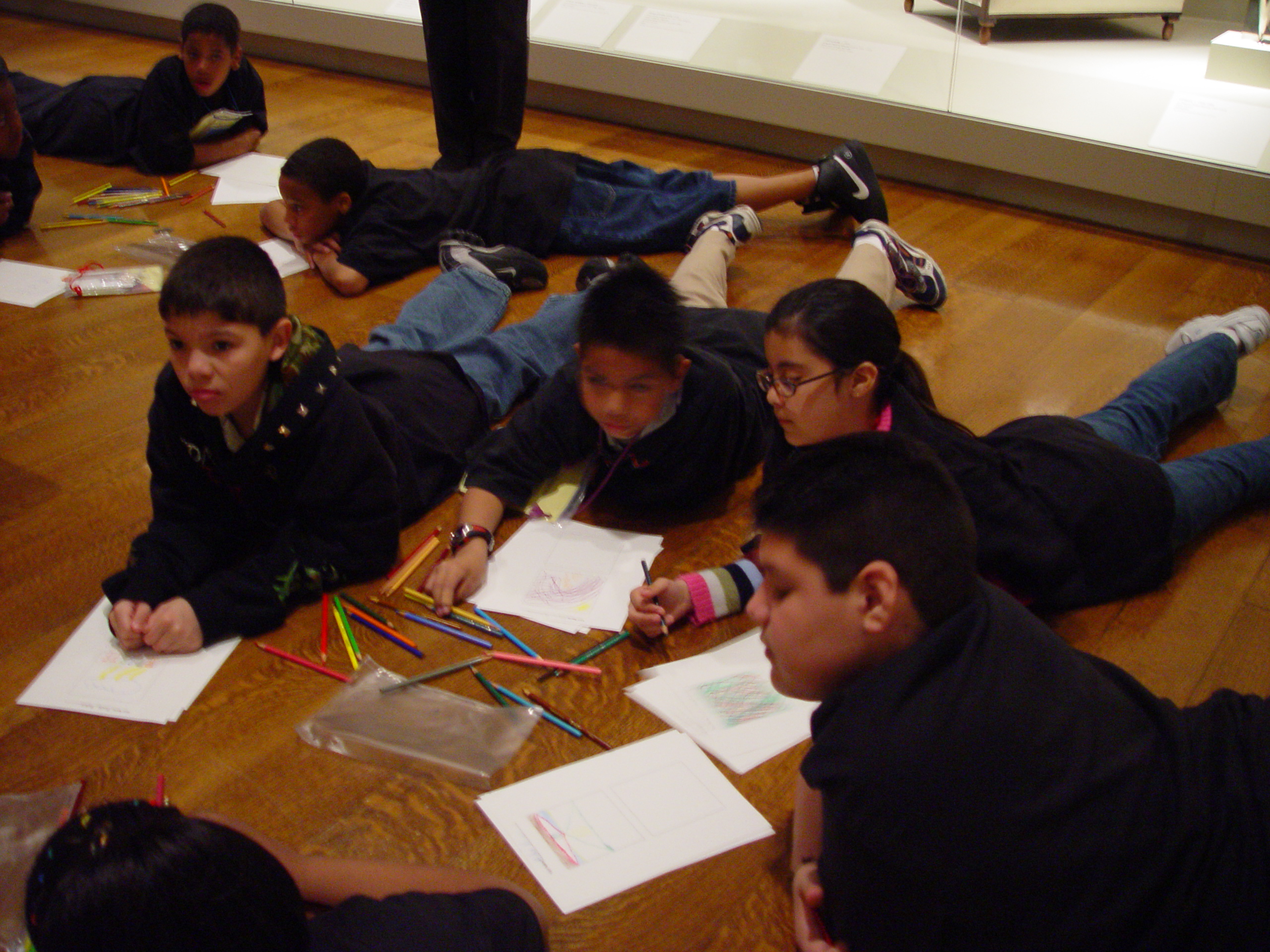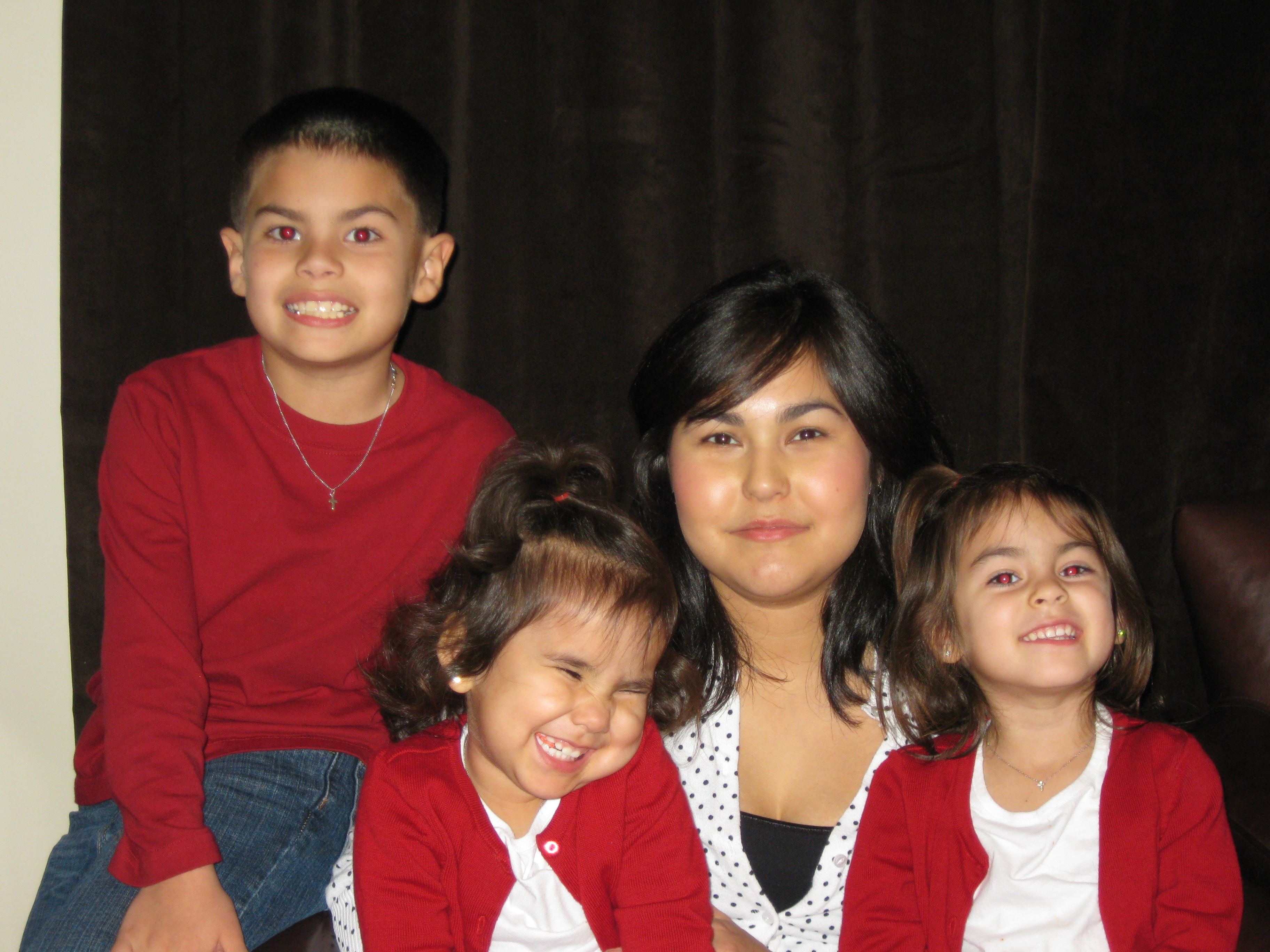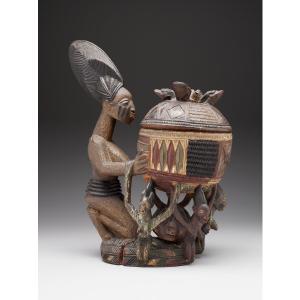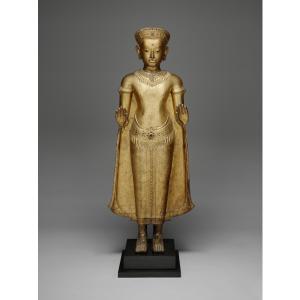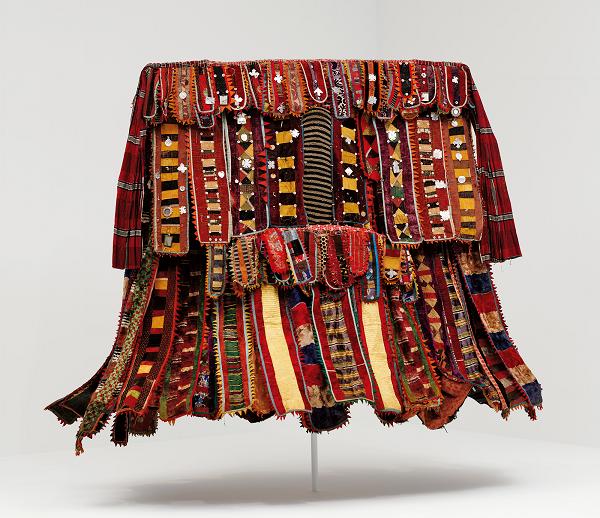
Egungun costume; 1920 - 1950; Yoruba peoples, Nigeria; cotton, silk, and wool fabric, metal, leather, mirrors, cotton, and wood; Dallas Museum of Art, Textile Purchase Fund, 1995.35.
This Egungun costume from Nigeria is one of sixty-five artworks in the Dallas Museum of Art’s collection that will be part of new online teaching materials to be launched in Fall 2011. Education staff, working in close collaboration with curators, designers, and web developers, have been hard at work for over one year designing a new model for creating online resources for teachers that are easy-to-access and provide the following:
- more and better-organized information
- video and audio clips related to the artworks and cultures
- contextual images and multiple views of the artworks
- teaching ideas that could be customized by classroom educators
The project is officially called Connect: Teachers, Technology, and Art, and it is supported through a grant from the Institute of Museum and Library Services. When we started our project work in November 2009, we went straight to the audience we serve: TEACHERS. The dialogue and partnership that developed with ten teachers who were selected to represent the minds, wishes, and needs of classroom educators everywhere has been crucial, as it led to a pivotal decision about the presentation of information and ideas about the sixty-five works of art.
These teachers helped us test current teaching materials to identify their strengths and weaknesses, and they showed us how they might use objects like the Egungun costume in a classroom experience with their students. Together, we analyzed and re-imagined what great teaching materials for DMA artworks could be and we are excited to reveal this sneak peek.
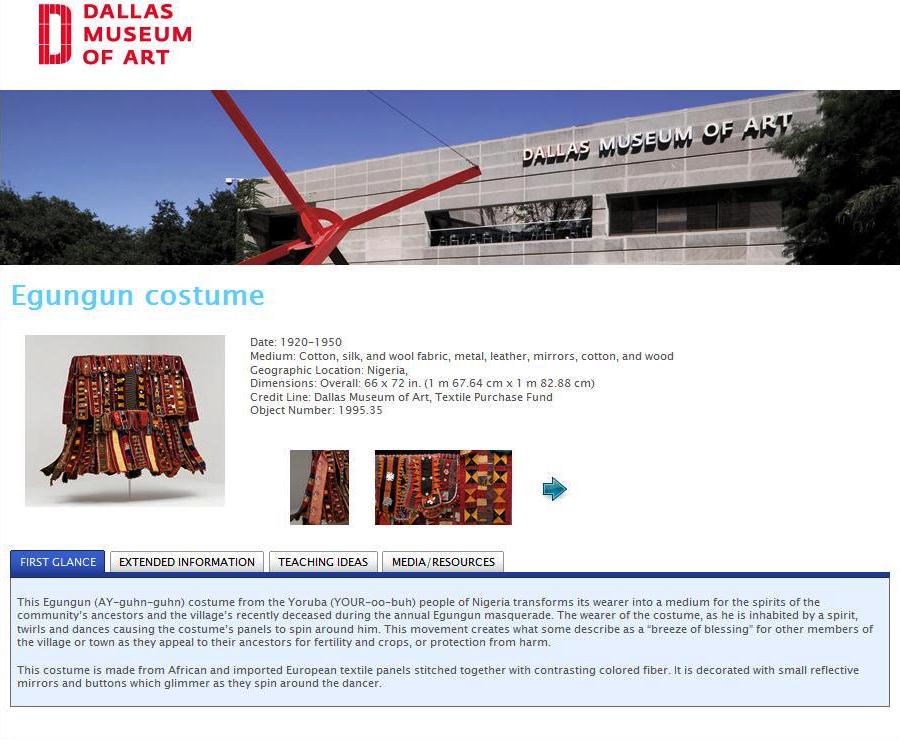 I reveal to you the new template for online teaching materials and the future of online resources for teachers and students at the Dallas Museum of Art. Each work of art will have its own set of information, clearly organized according to tabs. The “First Glance” tab provides introductory information about the object, similar to the information found on a label in the galleries. It may serve as the hook to pull you further into an exploration of the artwork. The “Extended Information” tab provides paragraphs of topical information that reveal more about the object. For example, the Egungun costume information includes paragraphs about Death and Religion, Materials, and African Masquerades. This text has been culled from new curatorial scholarship and existing interpretive resources. A teacher will also find contextual images in this section.
I reveal to you the new template for online teaching materials and the future of online resources for teachers and students at the Dallas Museum of Art. Each work of art will have its own set of information, clearly organized according to tabs. The “First Glance” tab provides introductory information about the object, similar to the information found on a label in the galleries. It may serve as the hook to pull you further into an exploration of the artwork. The “Extended Information” tab provides paragraphs of topical information that reveal more about the object. For example, the Egungun costume information includes paragraphs about Death and Religion, Materials, and African Masquerades. This text has been culled from new curatorial scholarship and existing interpretive resources. A teacher will also find contextual images in this section.
The third tab, “Teaching Ideas,” is a section presenting questions, comparisons, and activities that any teacher could use to get started teaching a lesson using this artwork. These ideas are a mix of resources generated by DMA education staff and K-12 teachers. Finally, the “Media/Resources” tab provides extra resources in the form of books, audio and video clips, and additional web sites. We are also working to provide as many pronunciations as possible for less familiar words, easy print capabilities, opportunities to view the images in larger sizes, and access to detail images of the art.
In April, we will begin testing this new model with a new group of ten teachers. Will they agree with the first ten in terms of needs and wishes? That is exactly what we hope to find out. Each of the new teachers will design and implement a lesson using the teaching material template above, and we will ask them to tell us what works and what needs to be changed or added. We look forward to this second round of crucial work because it will only make the online resources stronger. What are your initial thoughts about this new look and presentation?
At the completion of the Connect project, we plan to have a wonderful new model, but we will only have converted sixty-five objects to the new teaching materials. We have hundreds to convert! A redesigned home page and teacher resources site will help us streamline the presentation of resources as we remain in transition mode and continue converting the existing resources to the new format. I will be anxious to share the new site with you later this year and welcome your comments.
Nicole Stutzman
Director of Teaching Programs and Partnerships
